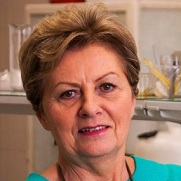Cellular Response to Biomaterials Designed for Tissue Engineering
A special issue of Cells (ISSN 2073-4409). This special issue belongs to the section "Cell Methods".
Deadline for manuscript submissions: closed (30 September 2022) | Viewed by 11873
Special Issue Editors
Interests: cell culture; cell-biomaterial interactions; biocompatibility; hydrogels; polymers; tissue engineering; regenerative medicine; scaffolds
Special Issues, Collections and Topics in MDPI journals
Interests: biocompatible biomaterials; dental and orthopedics implants; inorganic/organic scaffolds; tissue engineering; regenerative medicine
Special Issues, Collections and Topics in MDPI journals
Special Issue Information
Dear Colleagues,
Tissue engineering (TE) is a multidisciplinary field that brings together knowledge from cell biology, molecular biology, biochemistry, transplantology and nanotechnology. The main role of TE is the replacement or regeneration of damaged cells, tissues or organs in order to restore their normal functions. Currently, the main strategy of TE focuses on the application of biologically active molecules, cells, and biomaterials—either together or separately. To date, many types of TE have been developed, such as skin TE, cartilage TE, bone TE, neural TE, liver TE, cardiac TE, kidney TE, etc. For this reason, many types of cells are used in TE, namely, stem cells, fibroblasts, keratinocytes, chondrocytes, osteoblasts, neurons, hepatocytes, cardiac myocytes, renal cells, macrophages, etc. On the other hand, the application of biomaterials may be associated with bacterial or fungal infections, so biomaterials possessing antimicrobial properties have received a great deal of attention in the field of TE. For this reason, the evaluation of interactions between bacteria or fungi and biomaterials are also crucial in the context of tissue regeneration processes.
The aim of this Special Issue is to highlight the influence of various types of cells in TE applications, with particular emphasis on cellular response to biomaterials. All articles (original research papers and reviews) are welcome in this Special Issue.
Submitted manuscripts should be primarily (but not only) concerned with:
- Complex cell culture experiments in vitro allowing the evaluation of cell–biomaterial interactions (e.g., assessments of biocompatibility, antioxidant, anti-inflammatory, antibacterial or antifungal properties).
- Application of living grafts (biomaterial with cells) for in vivo research.
Dr. Katarzyna Klimek
Prof. Dr. Grazyna Ginalska
Guest Editors
Manuscript Submission Information
Manuscripts should be submitted online at www.mdpi.com by registering and logging in to this website. Once you are registered, click here to go to the submission form. Manuscripts can be submitted until the deadline. All submissions that pass pre-check are peer-reviewed. Accepted papers will be published continuously in the journal (as soon as accepted) and will be listed together on the special issue website. Research articles, review articles as well as short communications are invited. For planned papers, a title and short abstract (about 100 words) can be sent to the Editorial Office for announcement on this website.
Submitted manuscripts should not have been published previously, nor be under consideration for publication elsewhere (except conference proceedings papers). All manuscripts are thoroughly refereed through a single-blind peer-review process. A guide for authors and other relevant information for submission of manuscripts is available on the Instructions for Authors page. Cells is an international peer-reviewed open access semimonthly journal published by MDPI.
Please visit the Instructions for Authors page before submitting a manuscript. The Article Processing Charge (APC) for publication in this open access journal is 2700 CHF (Swiss Francs). Submitted papers should be well formatted and use good English. Authors may use MDPI's English editing service prior to publication or during author revisions.
Keywords
- regenerative medicine
- tissue engineering
- biomaterials
- scaffolds
- cell-biomaterial interactions
- cell viability, proliferation, and differentiation
- stem cells
- bacteria and fungi
- inflamatory response







